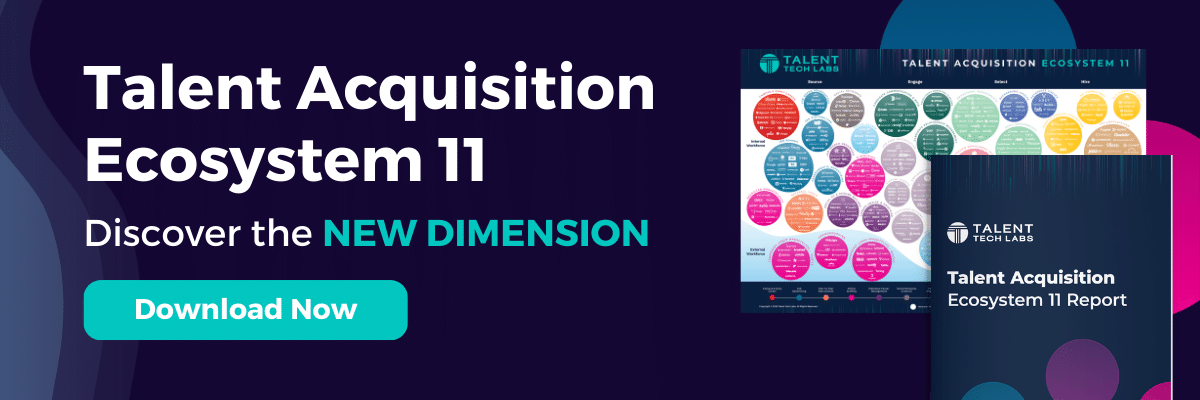Talent Tech Labs recently published a blog post about the trending convergence of Candidate Relationship Management (CRM) with Candidate Matching Systems. In this blog post, we’ll venture further into the ever-evolving CRM market and explore the convergence of Applicant Tracking Systems (ATS) with CRM platforms. We’ll also consider the potential impact of this convergence on the talent technology landscape.
For an in-depth analysis of the entire CRM landscape, Talent Tech Labs can help. Connect with us today!
ATS Providers are Adding CRM Capabilities:
Today there are multiple examples of ATS providers adding some degree of CRM functionalities, if not trying to directly replicate a CRM. The outcomes have yielded mixed results, with success typically dependent on the organization’s size and the scale of talent engagement programs they aim to manage. Here are a few examples of ATS providers offering core CRM functionality:
Lever: Lever provides cloud-based ATS software that includes native CRM functions, branded as LeverTRM (Talent Relationship Management)
SmartRecruiters: The company has released its SmartCRM add-on module that enables their customers to build pools of qualified and engaged candidates.
Workable: This ATS, targeted for small to medium-sized organizations, does not market itself as an ATS+CRM solution but leverages its CRM-like features, including passive talent sourcing and candidate rediscovery, to position the platform as an all-in-one recruiting solution.
CRM is Adding Native ATS:
While the ATS market has been trying to capitalize on the popularity of CRMs for several years, a recent trend is CRM providers trying to replicate or replace the ATS. Given the popularity of CRMs, despite the challenges with optimizing their use, we think there is more potential for CRMs to expand into the ATS market, rather than the other way around. Our optimism stems from the fact that most ATS products are not purpose built to be candidate experience-forward, and the traditional build for recruiter-experience is difficult to fundamentally change. Additionally, from a systems engineering perspective, it may be easier to implement a CRM and then an ATS, or implement them simultaneously, to avoid creating issues with the data model and data security.
An example of this trend is a CRM platform built to be a single source of truth across the talent lifecycle. As an extension of this purpose, Gem has developed its own ATS product, with a release date to come. In August, Gem has also announced a ‘preferred partnership’ integration and joint solution with Rippling Recruiting, Rippling’s native ATS, in response to the demand for an ATS within Gem’s customer base. This aims to achieve a more seamless integration of data and automation processes.
An adjacent example in this vein is Paradox, a candidate communication and engagement tool that recently launched its own ATS solution underpinned by its core conversational AI technology. Like its existing conversational UI-based solutions, the ATS is designed specifically for high-volume hiring, which is a primary need in today’s hiring market.
Perhaps the outlier to this trend is Avature, one of the largest global providers of enterprise recruiting software that launched its flagship CRM product in 2008. In the years since, Avature’s ATS has become highly favored by its clients, and is frequently used independently, as well as in conjunction with their CRM. As a newer generation of CRM, such as Phenom, Beamery and Gem, have gained the bulk of attention and market share, Avature is often categorized as an ATS despite its beginnings. What this may indicate is that historically, CRM and ATS software has ultimately been viewed as two separate products, and that providers offering both products tend to be stronger in one of them.
Nonetheless, enough has changed in the TA technology landscape that we believe this dynamic could evolve. For this new generation of CRM providers converging on ATS, we expect to see fast initial adoption in growth-stage and mid-sized companies looking for an organization-wide talent acquisition and management platform. There may also be early adoption among large enterprises needing an end-to-end solution for targeted talent populations, such as high-volume hiring, where the main ATS is not an ideal solution.
Should Your Organization Combine ATS+CRM?
Future Considerations

